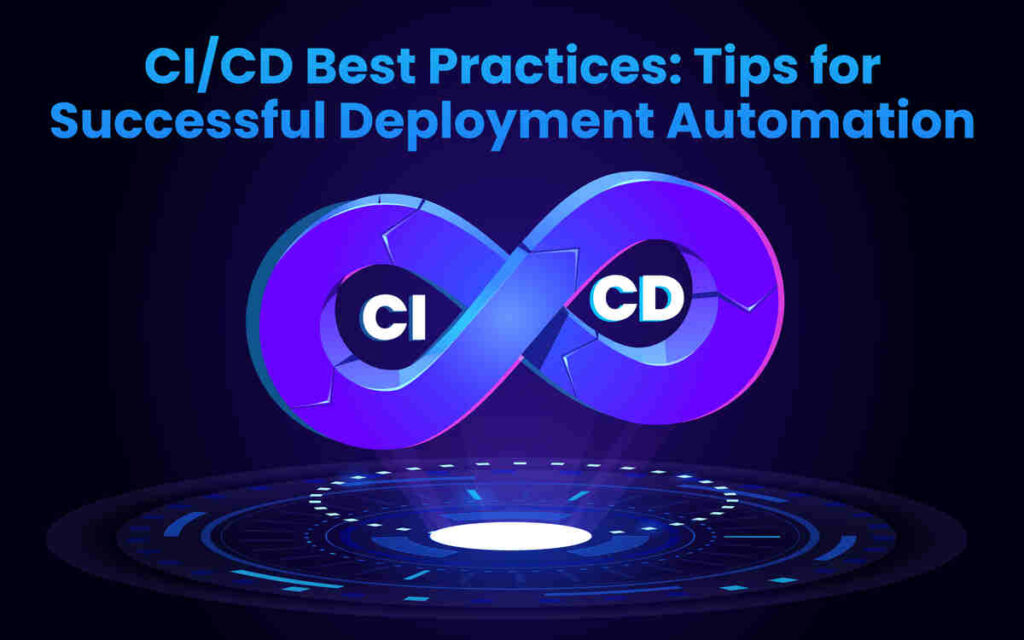Mastering Software Deployment Automation: Best Practices for Success
Software Deployment Automation

Software Deployment Automation is efficient and reliable deployment processes are crucial to a cornerstone in modern IT maintain competitive advantage. Software deployment automation has become a operations, enabling organizations to deploy applications with speed, consistency, and minimal human intervention. This article will delve deep into the intricacies of software deployment automation, highlighting its significance, key components, and best practices to ensure seamless deployments.
Understanding Software Deployment Automation
Software deployment automation refers to the use of automated tools and processes to manage the deployment of software applications across various environments, such as development, testing, staging, and production. Software Deployment Automation This approach reduces manual intervention minimizes errors, and accelerates the deployment process, allowing teams to deliver high-quality software more rapidly.
Key Components of Software Deployment Automation

To fully harness the power of software deployment automation, it is essential to understand its core components:
Continuous Integration and Continuous Deployment (CI/CD) Pipelines
CI/CD pipelines are the backbone of software deployment automation. These pipelines automate the process of integrating code changes, running tests, and deploying applications to various environments. By automating these steps, organizations can achieve faster delivery cycles and reduce the risk of deployment failures.
Infrastructure as Code (IaC) Software Deployment Automation
IaC is a practice where infrastructure configurations are managed and provisioned through code, rather than manual processes. This enables teams to automate the setup and maintenance of infrastructure, ensuring consistency across environments and reducing the chances of configuration drift.
Configuration Management Tools

Tools like Ansible, Puppet, and Chef play a critical role in software deployment automation. They allow teams to automate the configuration of servers and environments, ensuring that the deployed application runs smoothly across different stages of the deployment pipeline.
Containerization and Orchestration
Containers encapsulate applications and their dependencies, making it easier to deploy them consistently across various environments. Tools like Docker and orchestration platforms like Kubernetes help automate the deployment, scaling, and management of containerized applications.
Version Control Systems (VCS)
VCS such as Git are essential for tracking changes in code, infrastructure configurations, and deployment scripts. By integrating VCS with CI/CD pipelines, teams can automate the deployment process while maintaining a history of changes for auditing and rollback purposes.
Benefits of Software Deployment Automation
Adopting software deployment automation offers numerous benefits that contribute to the overall success of software projects:
- Consistency and Reliability: Automated processes ensure that deployments are consistent across different environments, reducing the likelihood of errors caused by manual configurations.
- Reduced Human Error: By minimizing manual tasks, automation reduces the risk of human errors that can lead to deployment failures or security vulnerabilities.
- Improved Collaboration: Automation fosters collaboration among development, operations, and testing teams, as everyone can work from a shared, automated pipeline.
- Scalability: Automated deployment processes can easily scale to accommodate growing application demands, ensuring that your infrastructure can handle increased traffic and workload.
Best Practices for Implementing Software Deployment Automation

Implementing software deployment automation requires careful planning and execution. Software Deployment Automation Here are some best practices to ensure a successful automation strategy:
Define Clear Objectives
Before implementing automation, it is crucial to define clear objectives. Determine what you want to achieve with automation, whether it’s faster deployments, improved consistency, or reduced downtime. Having well-defined goals will guide your automation efforts and help you measure success.
Choose the Right Tools
Selecting the right tools for automation is critical. Consider factors such as the complexity of your application, the size of your team, and the environments you need to support. Popular tools include Jenkins for CI/CD pipelines, Terraform for IaC, and Docker for containerization.
Automate Testing Software Deployment Automation
Automated testing is an integral part of deployment automation. Ensure that your CI/CD pipeline includes automated tests for unit, integration, and end-to-end scenarios. This will help catch issues early in the deployment process and prevent them from reaching production.
Implement Version Control for Everything
All aspects of your deployment process should be under version control, including application code, configuration files, and deployment scripts. This ensures that you can track changes, roll back to previous versions if necessary, and maintain a history of all deployments.
Monitor and Optimize Software Deployment Automation
Automation is not a one-time task. Continuously monitor your automated deployments to identify bottlenecks, errors, or inefficiencies. Use monitoring tools to track the performance of your deployments and make adjustments as needed to optimize the process.
Ensure Security and Compliance
Security should be a top priority in your deployment automation strategy. Implement security best practices such as encrypting sensitive data, using secure credentials, and regularly updating your tools. Additionally, ensure that your automation processes comply with industry regulations and standards.
Challenges in Software Deployment Automation

While the benefits of software deployment automation are significant, Software Deployment Automation there are challenges that organizations may face during implementation:
- Complexity: Automating complex applications with multiple dependencies can be challenging and may require significant expertise in both development and operations.
- Tool Integration: Ensuring seamless integration between different automation tools can be difficult, especially when dealing with legacy systems or diverse technology stacks.
- Cultural Resistance: Teams accustomed to manual processes may resist the shift to automation. It is important to provide training and demonstrate the long-term benefits of automation to gain buy-in from all stakeholders.
Conclusion
Software deployment automation is a powerful strategy that can transform the way organizations deliver applications. By automating key aspects of the deployment process, teams can achieve faster, more reliable, and scalable deployments. However, successful implementation requires careful planning, the right tools, and a commitment to continuous improvement.
Read More: Network Marketing Benefits




